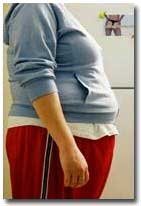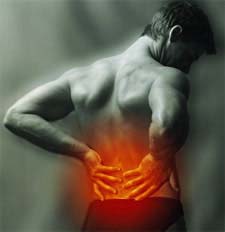 Dr. Sharon Jacob from the University of Miami/Jackson Memorial Medical Center in Florida and colleagues reviewed the scientific support for herbals used by patients with psoriasis.
Dr. Sharon Jacob from the University of Miami/Jackson Memorial Medical Center in Florida and colleagues reviewed the scientific support for herbals used by patients with psoriasis.
Here are the highlights.
Continue reading Herbals to treat psoriasis: A review of the evidence →
 Ms. Meenakshi Khatta is a nurse practitioner and associate professor at the University of Maryland in Baltimore. Nurse Khatta has reviewed the use of CAM to treat pain due to musculoskeletal conditions.
Ms. Meenakshi Khatta is a nurse practitioner and associate professor at the University of Maryland in Baltimore. Nurse Khatta has reviewed the use of CAM to treat pain due to musculoskeletal conditions.
Here are her findings on herbal supplements used to treat fibromyalgia, osteoarthritis, and rheumatoid arthritis. Continue reading Herbals for arthritis and other musculoskeletal conditions →
 The World Health Organization has predicted a 39% rise in the worldwide prevalence of diabetes by 2030. And an article in The Lancet indicates this might be an underestimation.
The World Health Organization has predicted a 39% rise in the worldwide prevalence of diabetes by 2030. And an article in The Lancet indicates this might be an underestimation.
Since November is Diabetes Month, here’s a round-up of CAM options for people with diabetes from 2006 through March 2007.
Continue reading CAM and diabetes: An update of recent studies →
 Dr. Philip Hansten from the University of Washington School of Pharmacy has spent more than 30 years chronicling and documenting drug interactions.
Dr. Philip Hansten from the University of Washington School of Pharmacy has spent more than 30 years chronicling and documenting drug interactions.
In an article in Pharmacy Times, he and Dr. John Horn focus on the risks for people with diabetes or taking blood thinners. Continue reading Getting specific about CAM-drug interactions →
 In preparation for the upcoming weight management conferences in Europe, here is what we know about the value of herbals as an aid to weight loss.
In preparation for the upcoming weight management conferences in Europe, here is what we know about the value of herbals as an aid to weight loss.
Continue reading Herbal supplements for weight loss: What works, what doesn’t →
 The Cochrane Collaboration has evaluated the effectiveness of herbal medicines for the treatment of low back pain.
The Cochrane Collaboration has evaluated the effectiveness of herbal medicines for the treatment of low back pain.
Here’s what they found.
Continue reading Herbals worth considering to treat low back pain →
 Capsicum (Cayenne) is a category of plants used as spices, vegetables, and medicines. Think chili pepper, red or green pepper, bell pepper, and paprika.
Capsicum (Cayenne) is a category of plants used as spices, vegetables, and medicines. Think chili pepper, red or green pepper, bell pepper, and paprika.
In this study, capsicum plaster was applied at a classical Chinese acupoint to lessen pain in infants and children following surgery.
Continue reading Capsicum plaster to control pain following inguinal hernia repair in children →
 Reported earlier on the site was a study from the Centers for Disease Control and Prevention, which found that 36% of Americans use CAM ? 62% if prayer is included.
Reported earlier on the site was a study from the Centers for Disease Control and Prevention, which found that 36% of Americans use CAM ? 62% if prayer is included.
Now, here is an estimate of the use of CAM in one Central American country.
Continue reading The use of CAM among poor Central Americans →
Complementary and Alternative Medicine: Fair, Balanced, and to the Point
 Dr. Sharon Jacob from the University of Miami/Jackson Memorial Medical Center in Florida and colleagues reviewed the scientific support for herbals used by patients with psoriasis.
Dr. Sharon Jacob from the University of Miami/Jackson Memorial Medical Center in Florida and colleagues reviewed the scientific support for herbals used by patients with psoriasis. Ms. Meenakshi Khatta is a nurse practitioner and associate professor at the University of Maryland in Baltimore. Nurse Khatta has reviewed the use of CAM to treat pain due to musculoskeletal conditions.
Ms. Meenakshi Khatta is a nurse practitioner and associate professor at the University of Maryland in Baltimore. Nurse Khatta has reviewed the use of CAM to treat pain due to musculoskeletal conditions. The World Health Organization has predicted a 39% rise in the worldwide prevalence of diabetes by 2030. And an
The World Health Organization has predicted a 39% rise in the worldwide prevalence of diabetes by 2030. And an  In preparation for the upcoming weight management
In preparation for the upcoming weight management  The Cochrane Collaboration has
The Cochrane Collaboration has